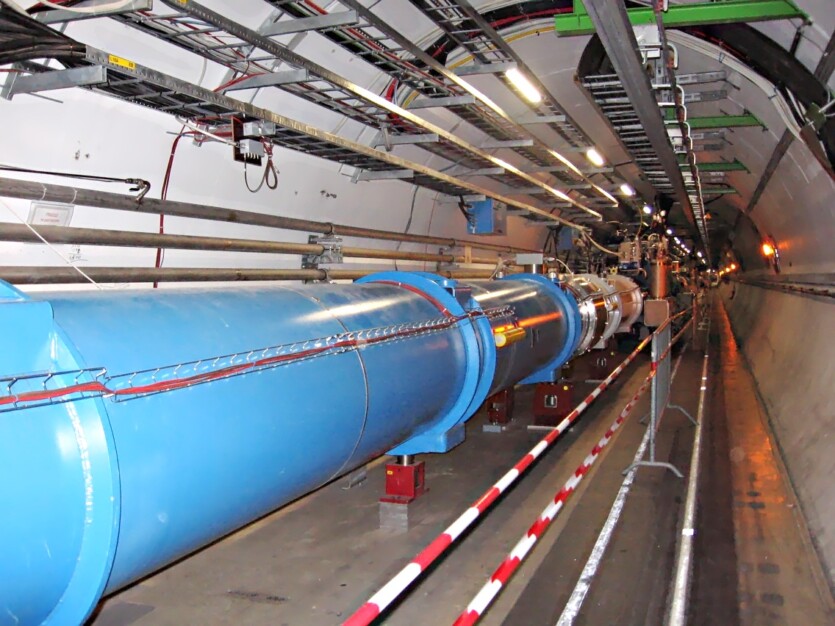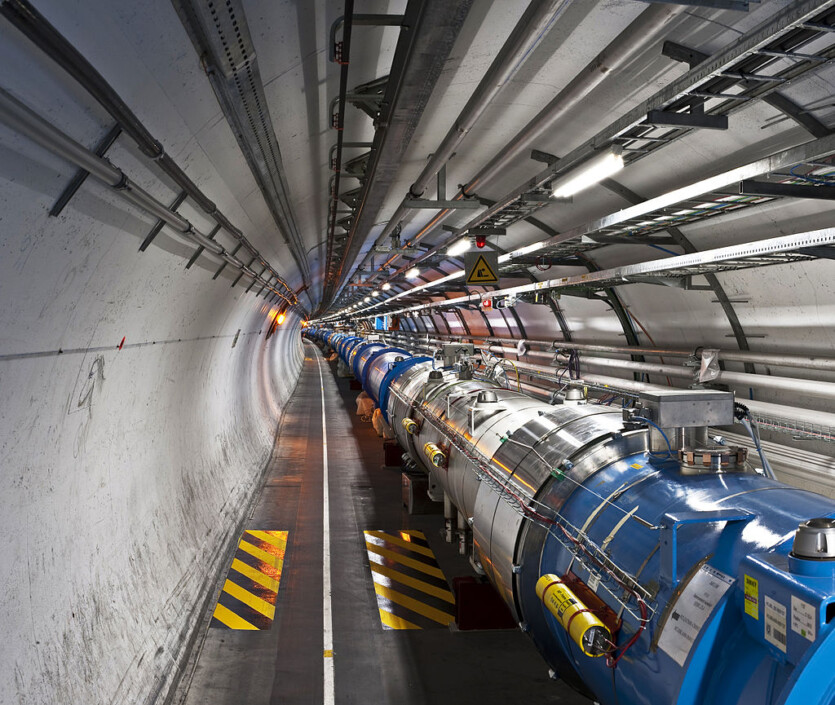
Scientists from the European Center for Nuclear Research (CERN) have announced the possible detection of the signal of the smallest elementary particle — toponium at the Large Hadron Collider.
The smallest ever detected hadron a type of elementary particle consisting of baryons and mesons. The former are represented by protons and neutrons that make up the nucleus of an atom. Baryons and mesons differ from each other by the number of quarks in their composition. topon — a particle consisting of pairs of a true quark and a true antiquark. Quarks — fundamental particles, which form protons and neutrons, which in turn are the components of atomic nuclei. Quarks are also a key component of all visible matter in the Universe.
a type of elementary particle consisting of baryons and mesons. The former are represented by protons and neutrons that make up the nucleus of an atom. Baryons and mesons differ from each other by the number of quarks in their composition. topon — a particle consisting of pairs of a true quark and a true antiquark. Quarks — fundamental particles, which form protons and neutrons, which in turn are the components of atomic nuclei. Quarks are also a key component of all visible matter in the Universe.
Toponium is a quarkonium — a type of meson consisting of a quark-antiquark pair of the same species. However, this particle is formed exclusively from a pair of true quarks and true antiquarks, which are considered the heaviest elementary particles in the Universe. According to physicists, toponium is the last type of quarkonium among the heavy quarks, and it has not been detected because toponium has a very short lifetime. It was believed that it was impossible to detect it in the Large Hadron Collider. However, based on the results of the experiments, physicists are inclined to believe that they were able to catch the toponium signal.
The purpose of the experiments at the Large Hadron Collider was to search for new particles of the Higgs boson, discovered in 2012. This elementary particle is key to understanding how other elementary particles in the Universe get their mass. The standard model of particle physics best describes both the particles themselves and the fundamental interactions, but it does not account for phenomena such as dark matter, dark energy, and gravity.

According to physicists, new particles of the Higgs boson should interact most strongly with true quarks. The search revealed more pairs of true quarks and true antiquarks than expected at the minimum energy required for their formation. This led the scientists to conclude that they could probably detect a toponium signal.
The scientists analyzed data on proton collisions in the collider for the period from 2016 to 2018 at the standard energy of 13 teraelectron volts. To understand the nature of these collisions, the scientists studied the scattering of these particles in space, which provided information about their quantum state before the collision. In addition, a simplified topon model was used to compare the results obtained during the experiments.
According to physicists, the probability of toponium formation as a result of proton collisions performed in the collider is 8.8 times per trillion. While the results support the hypothesis that the observed particle is indeed toponium, the researchers are cautious about drawing conclusions, as it could also be an additional particle of the Higgs boson.
To confirm their hypothesis, the scientists plan to create a more accurate model of toponium and conduct additional experiments. If confirmed, toponium will be the smallest hadron ever discovered. This particle also stands out from other quarkoniums because of its decay, which occurs due to the decay of quarks instead of the annihilation of matter-antimatter.
https://itc.ua/en/news/cern-wants-to-build-a-91-km-supercollider-for-17-4-billion/
The results of the study are published in the preprint server arXiv
Source: Interesting Engineering

Spelling error report
The following text will be sent to our editors: